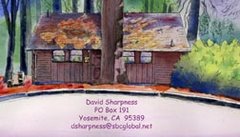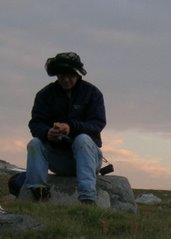
Gundestrup cauldron
I was looking for a pic of Suibhne, but only could find that he is portrayed sometimes as having deer horns, like a Celtic horned god, and this led to the image on the Gundestrup cauldron of a seated man with deer horns, holding a torque and a ram headed snake, and surrounded by an assortment of animals.
Now, there all kinds of things said about this cauldron, but one site has a bit where the author explains that the images are astronomcal, that it is a kind of zodiac. Which makes sense to me. The telling point is that the figures have their arms raised, much like the figures in the famous zodiac of Dendera.
Nearly everything in anicient art is somehow tied into astronomy, the changing seasons, the calendar, and sequences living things go through in life. The book Hamlet’s Mill goes into this, but offers no explanation of how so many diverse ancient cultures come up with the same images and tales.
Suibhne Geilt. I didn’t know what “geilt” referred too, but it is a word that means a wild kindof nature poet, or something.
And I’m trying to make something of St. Francis that fits in all this. One site already has, calling itself the Fourth Order of St. Francis and Clare. Francis dreamt up three orders, and this site has added a fourth—geilts!
I have a genius for thinking up things only to find someone else already has!
I’d like to tie the Homeridae into this too!
Some of the sites I visited and recommend. I bought the Soldier’s Heart on Amazon.
quotes
Yes, Breddelwyn, the "Geilt" is indeed a separate classification of Celtic poet, apart from the standard and more formal categories of Fili, Ca'inte, and so forth. Some scholars believe that Merlin was a composite of several different figures, one of which may have been Suibhne Geilt (Mad Sweeney) or the Scottish Lailokin. The Geilt is a crazed hermit, usually driven mad by events connected with battle or war. They run wild in the forest, eat no meat but only plants (watercress, in Suibhne's case)and milk, and can move with supernatural grace through the treetops. The Geilt offers mainly nature poetry, of course, in keeping with his shamanic character.
http://www.ancientworlds.net/aw/Post/256837
103. Cu Geilt ( Geilt; Irish, A Person Who Inhabits Woods ); His Son; A Quo O Caillte; Anglicised Kielty, Quilty, Galt, Wood, And Woods.
* Geilt; Thius Word, According To O Briens Dictionary, Originally Meant ( A Wild Man Or Woman, One That Inhabits Woods Or Deserts) Coill And Coillte; Irish, Woods. Welsh Guylht ( A Wild Man And Gelhtydh Wood ) Compare Both Irish Words Geilt And Coillte, And The Latin Celtae, And The Hebrew Work Celat, ( Refuge ); Fir Tge Caltae Frequented The Woods And Groves, Either For Their Places Of Refuge And Residence, Or To Perform Their Religious Rites And Other Ceremonies.
http://www.kieltyassociation.com/html/heremon_geneology.html
I was looking for a pic of Suibhne, but only could find that he is portrayed sometimes as having deer horns, like a Celtic horned god, and this led to the image on the Gundestrup cauldron of a seated man with deer horns, holding a torque and a ram headed snake, and surrounded by an assortment of animals.
Now, there all kinds of things said about this cauldron, but one site has a bit where the author explains that the images are astronomcal, that it is a kind of zodiac. Which makes sense to me. The telling point is that the figures have their arms raised, much like the figures in the famous zodiac of Dendera.
Nearly everything in anicient art is somehow tied into astronomy, the changing seasons, the calendar, and sequences living things go through in life. The book Hamlet’s Mill goes into this, but offers no explanation of how so many diverse ancient cultures come up with the same images and tales.
Suibhne Geilt. I didn’t know what “geilt” referred too, but it is a word that means a wild kindof nature poet, or something.
And I’m trying to make something of St. Francis that fits in all this. One site already has, calling itself the Fourth Order of St. Francis and Clare. Francis dreamt up three orders, and this site has added a fourth—geilts!
I have a genius for thinking up things only to find someone else already has!
I’d like to tie the Homeridae into this too!
Some of the sites I visited and recommend. I bought the Soldier’s Heart on Amazon.
quotes
Yes, Breddelwyn, the "Geilt" is indeed a separate classification of Celtic poet, apart from the standard and more formal categories of Fili, Ca'inte, and so forth. Some scholars believe that Merlin was a composite of several different figures, one of which may have been Suibhne Geilt (Mad Sweeney) or the Scottish Lailokin. The Geilt is a crazed hermit, usually driven mad by events connected with battle or war. They run wild in the forest, eat no meat but only plants (watercress, in Suibhne's case)and milk, and can move with supernatural grace through the treetops. The Geilt offers mainly nature poetry, of course, in keeping with his shamanic character.
http://www.ancientworlds.net/aw/Post/256837
103. Cu Geilt ( Geilt; Irish, A Person Who Inhabits Woods ); His Son; A Quo O Caillte; Anglicised Kielty, Quilty, Galt, Wood, And Woods.
* Geilt; Thius Word, According To O Briens Dictionary, Originally Meant ( A Wild Man Or Woman, One That Inhabits Woods Or Deserts) Coill And Coillte; Irish, Woods. Welsh Guylht ( A Wild Man And Gelhtydh Wood ) Compare Both Irish Words Geilt And Coillte, And The Latin Celtae, And The Hebrew Work Celat, ( Refuge ); Fir Tge Caltae Frequented The Woods And Groves, Either For Their Places Of Refuge And Residence, Or To Perform Their Religious Rites And Other Ceremonies.
http://www.kieltyassociation.com/html/heremon_geneology.html
The Fourth Order of Francis and Clare
http://www.fourthorder.org/index.htm
As the world considers the path of war, poet Patricia Monaghan offers us the wisdom of Mad Sweeney, Suibhne Geilt, in these compelling new poems and translations of the famous twelfth century Middle Irish narrative.
http://www.fourthorder.org/id37.htm
Let us now ask which of the images on the Gundestrup Cauldron might be Lugh, and to what constellation he might correspond.The central image, the Horned One, is quite arresting. The other images on the panel are the neighboring constellations; subject to artistic license, they are in the right places. Ursa Major is turned around to face the Horned One to express his vassalship. Clockwise from the lower right, the following constellations can be recognized: Leo Major and Minor, Hydra, Boötes, Hercules / Ophiuchus (bearing horns), the Ass (an obsolete constellation), Ursa Minor, Delphinus, and Capricornus.On comparing the central Horned One with Boötes on the star chart, one sees a compelling likeness: the Buddhic position of the legs, and the torc on his right arm corresponding in position with Corona Borealis; this was also Lugh's sling or Mes Gegra's brain.Very anciently, the Horned One was resident in the constellation of Menat, which was Hercules plus Ophiuchus. As precession continued, the sky position of Menat ceased to signal the autumnal equinox, so the Horned One moved on into Boötes.As mentioned earlier, snakes were used to mark important circles on the celestial sphere; for instance, Hydra marked the equator. Around 7500 BC the colure (meridian) of the autumnal equinox was marked by Serpens Caput, the snake in the hand of Menat. By 5000 BC the colure had moved to the staff in the left hand of Boötes.The maker of the Gundestrup Cauldron depicted the staff as a mythical serpent; it is to be explained as an attribute transferred from Menat. The staff could also be imagined as the upwardly extended left arm. This sky figure was none other than Lugh Lamhfhada, of the Long Arm, who was similar to the Indian god Savitar, of the Wide Hand (Mac Cana 1970).In the story of How Finn Got His Name, the Long Arm became the fish fork. Therefore, Lugh was a manifestation of the ancient Cernunnos, formerly dwelling in Menat, but later in Boötes. By this time he was called Lugh or Finn.
http://www.lexiline.com/lexiline/lexi85.htm
unquotes
DavidDavid
Tree in the Door
May 20, 2007



No comments:
Post a Comment